Key Takeaways
- Cockroaches enter homes seeking food, water, and shelter, making kitchens, bathrooms, and basements prime infestation areas.
- They survive in harsh conditions, can go without food for weeks, and reproduce rapidly, making them difficult to eliminate once established.
- Cockroaches play a role in nature as decomposers, contributing to soil health and serving as a food source for other species.
- Indoor infestations pose health risks, including disease transmission, allergy triggers, and food contamination.
- Prevention includes sanitation, sealing entry points, and using pest control methods to keep cockroaches out while respecting their ecological role.
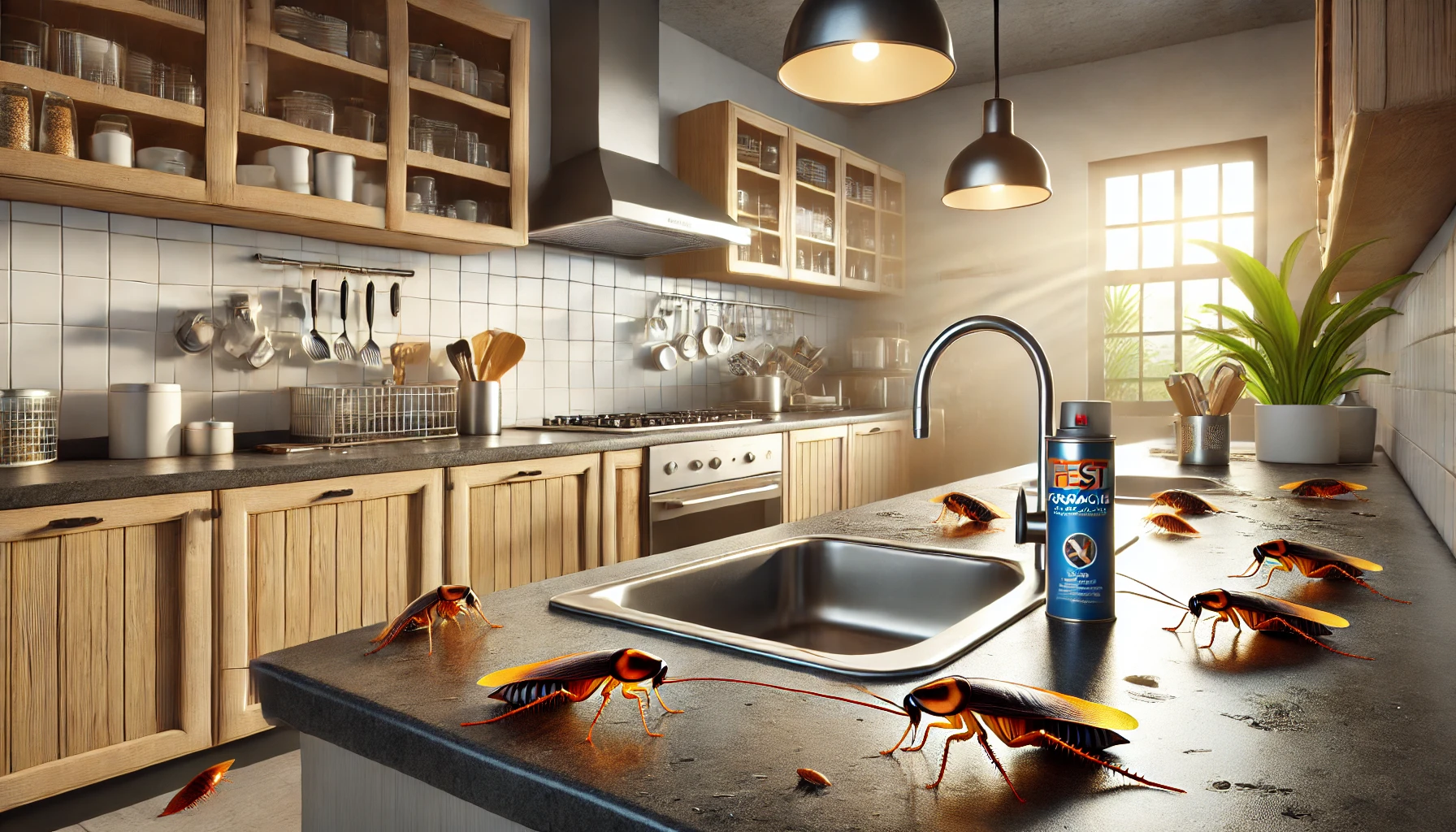 Cockroaches are the most resilient and adaptable pests in the world, often seen as unwelcome invaders in homes across the United States. However, beyond their reputation as household nuisances, cockroaches serve an essential ecological role. Understanding why cockroaches appear in homes and their broader contribution to nature helps homeowners take preventive action while also recognizing their role in the environment.
Cockroaches are the most resilient and adaptable pests in the world, often seen as unwelcome invaders in homes across the United States. However, beyond their reputation as household nuisances, cockroaches serve an essential ecological role. Understanding why cockroaches appear in homes and their broader contribution to nature helps homeowners take preventive action while also recognizing their role in the environment.
Why Do Cockroaches Appear in Homes?
Cockroaches invade homes primarily in search of three basic necessities: food, water, and shelter. Even in the cleanest households, these resilient insects can find ways to thrive. Here are the most common reasons cockroaches enter homes:1. Access to Food Sources Cockroaches are omnivorous scavengers capable of surviving on a wide range of food sources. They are attracted to:
- Crumbs and food spills left on countertops and floors.
- Grease buildup on stoves and kitchen surfaces.
- Pet food left out overnight.
- Organic materials such as paper, cardboard, and even glue used in book bindings.
- Unsealed food containers or improperly stored pantry items.
- Leaky pipes and faucets.
- Standing water in sinks or pet bowls.
- High humidity areas with poor ventilation.
- Condensation around refrigerators, air conditioners, and plumbing fixtures.
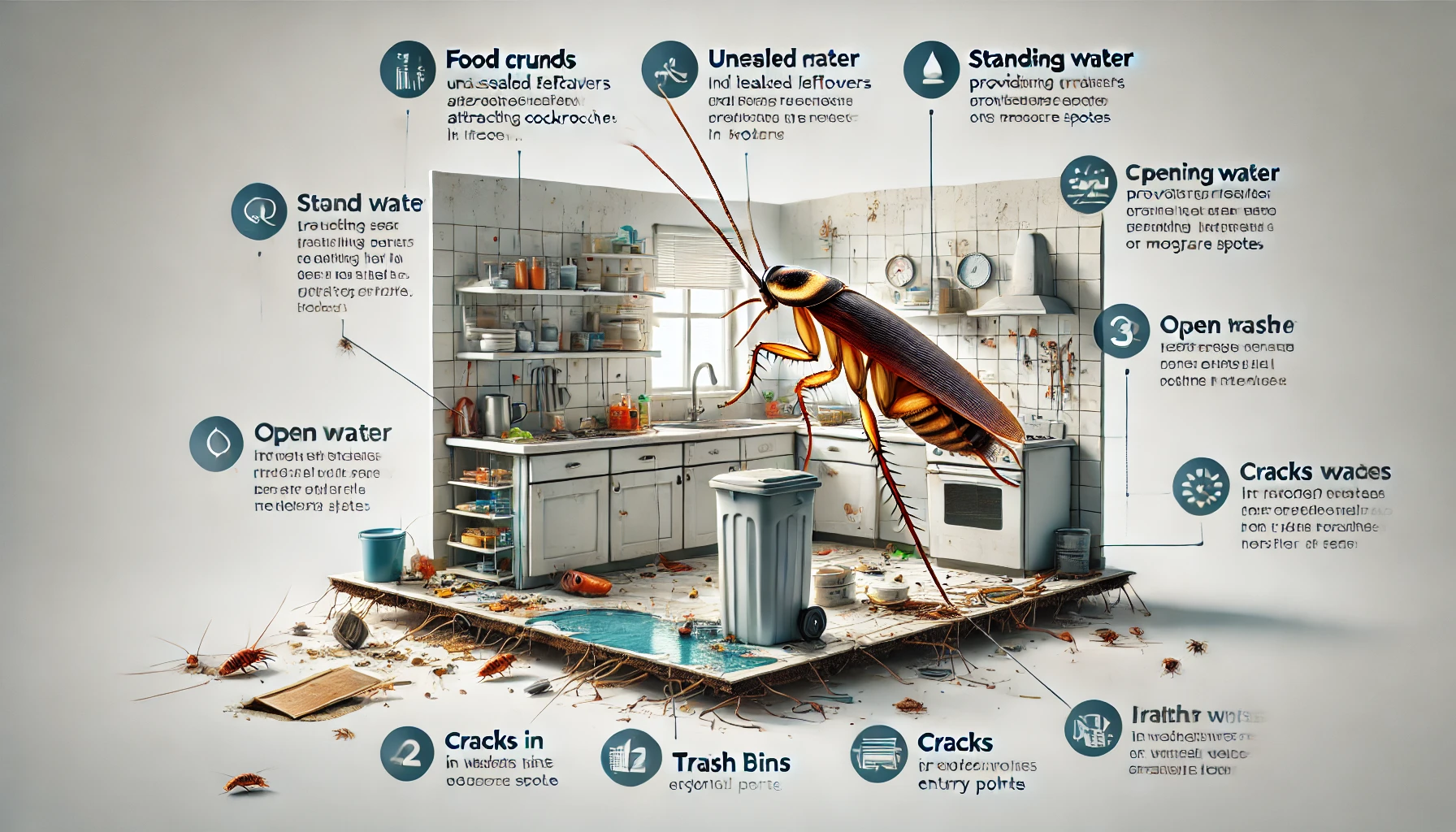

Not getting a solution?
Get your free pest control estimate today!- Cracks and crevices in walls and floors.
- Behind kitchen appliances such as refrigerators and ovens.
- Inside cabinets, drawers, and storage boxes.
- Under sinks and inside plumbing areas.
- Cluttered areas such as attics, basements, and garages.
- Gaps in doorways and windows.
- Vents and drains.
- Sewer lines and plumbing gaps.
- Items brought into the home, such as grocery bags, cardboard boxes, and second-hand furniture.
How Cockroaches Survive and Thrive
- Cockroaches are exceptionally versatile and they can easily survive in extreme conditions. Their resilience comes from various survival traits:
-
Tough Exoskeleton: Their hard outer shell allows them to squeeze into tiny cracks and crevices.
-
Rapid Reproduction: Some species, like the German cockroach, can produce hundreds of offspring per year, leading to rapid infestations if left unchecked.
-
Minimal Food Requirements: Cockroaches can survive weeks without food and can sustain themselves on paper, glue, and even soap.
-
Resistance to Harsh Conditions: They can withstand high levels of radiation and survive in extreme temperatures.
-
Ability to Go Without Air: Cockroaches can hold their breath for up to 40 minutes, making them capable of surviving water exposure.
 The Role of Cockroaches in Nature
While cockroaches are often considered as some normal pests in human environments, they play a an important role in natural ecosystems. Here’s how cockroaches contribute to the environment:
1. Decomposers and Nutrient Recycling
Cockroaches have a role as helping in break down of organic matter, by speeding up decomposition. They feed on:
The Role of Cockroaches in Nature
While cockroaches are often considered as some normal pests in human environments, they play a an important role in natural ecosystems. Here’s how cockroaches contribute to the environment:
1. Decomposers and Nutrient Recycling
Cockroaches have a role as helping in break down of organic matter, by speeding up decomposition. They feed on:
- Decaying plants and leaves.
- Rotting wood and fallen logs.
- Animal carcasses and droppings.
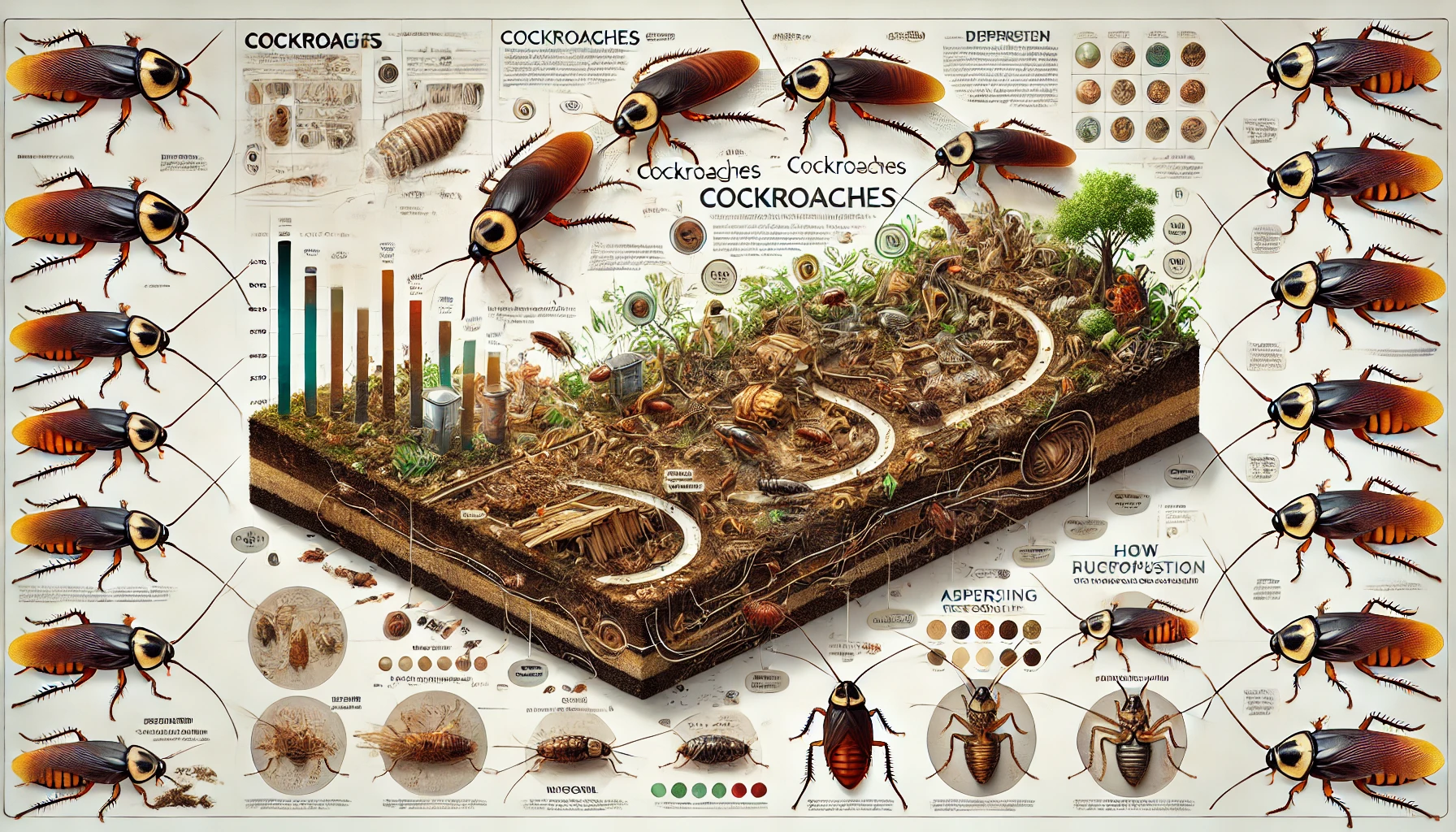 2. Food Source for Other Species
Cockroaches play an essential part in the food chain, serving as prey for:
2. Food Source for Other Species
Cockroaches play an essential part in the food chain, serving as prey for:
- Birds such as chickens, sparrows, and owls.
- Reptiles like lizards and snakes.
- Amphibians including frogs and toads.
- Mammals such as rodents and bats.
- Other insects, including wasps and spiders.
- elevated levels of oxygen in the soil.
- increased drainage of water.
- soil fertility through the decomposition of degraded materials.
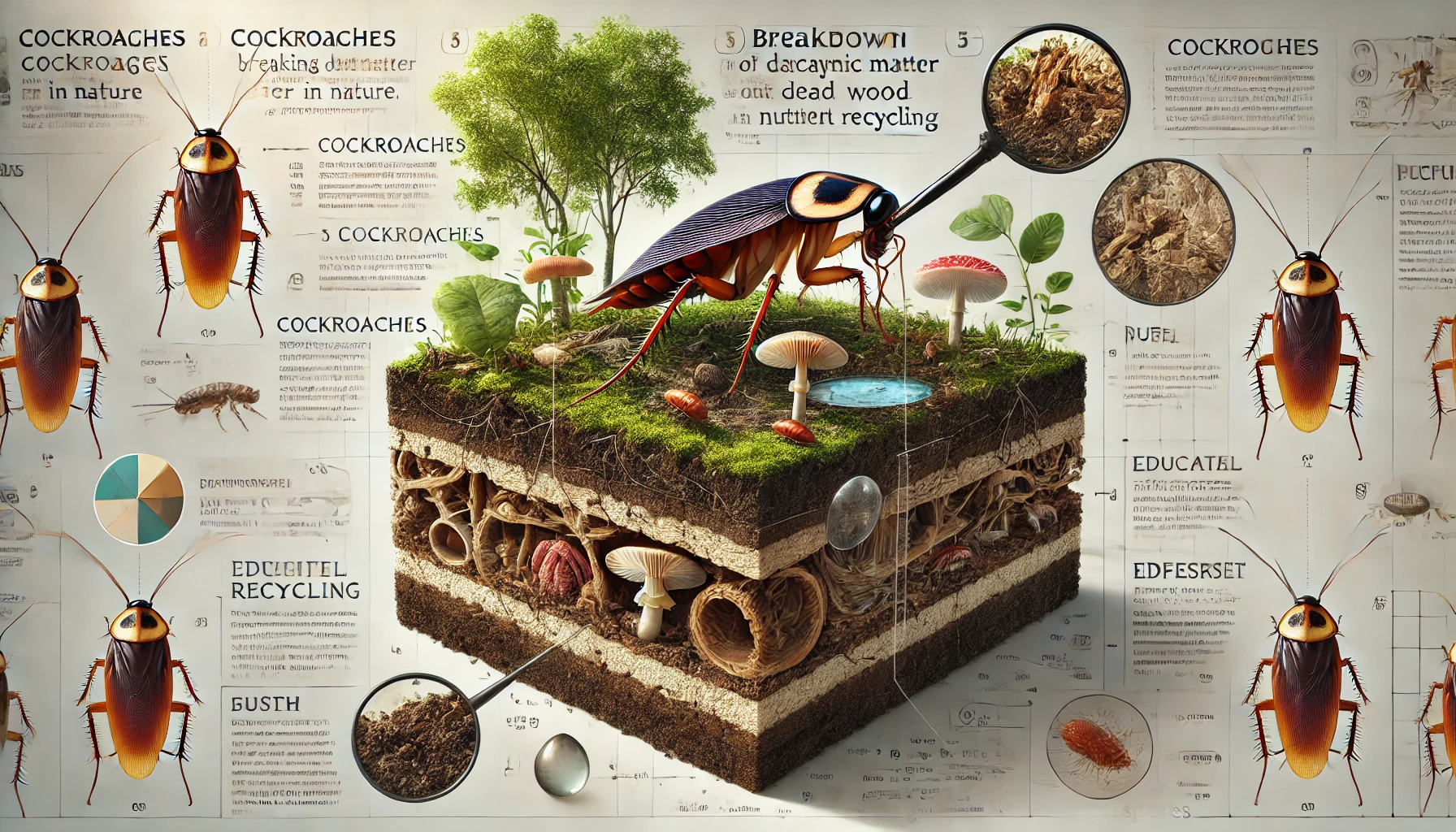
When Cockroaches Start to Cause Issues
Although cockroaches are beneficial to the environment, their presence in homes can be hazardous to health and cause hygienic issues. The following are typical problems linked to indoor cockroach infestations:Disease Transmission by Cockroaches
- Cockroaches move on those bacteria and pathogens that can adulterate food and surfaces, including:
-
Salmonella: A common cause of food poisoning spread by contaminated surfaces.
-
E. coli: Can lead to digestive issues and infections when transferred to food.
-
Parasites: Roaches can carry intestinal parasites that affect humans.
- Chew through fabric, paper, and packaging materials.
- Damage books, wallpaper, and important documents.
- Leave unpleasant odors in areas of infestation.
How to Minimize Cockroach Infestations
Understanding what attracts cockroaches is the foremost step in hampering them from becoming an issue in your home. Here are some effective prevention strategies:Eliminate Food and Water Sources
- Store food in airtight sealed containers.
- Wipe down kitchen surfaces and vacuum regularly.
- Take out the trash frequently and keep bins tightly sealed.
- Repair leaks and eliminate standing water.
Declutter and Clean Regularly
- Reduce clutter in basements, attics, and storage areas.
- Avoid stacking cardboard boxes or newspapers, as cockroaches use them as shelter.
- Regularly clean behind appliances where grease and crumbs accumulate.
Seal Entry Points
- Use caulk to seal cracks and crevices around doors, windows, and plumbing.
- Install door sweeps to block gaps under doors.
- Repair damaged window screens and seal vent openings.
Use Safe Pest Control Methods
- Set up cockroach bait stations and traps in common infestation areas.
- Use boric acid or diatomaceous earth in crevices where cockroaches hide.
- Contact professional pest control services for severe infestations.
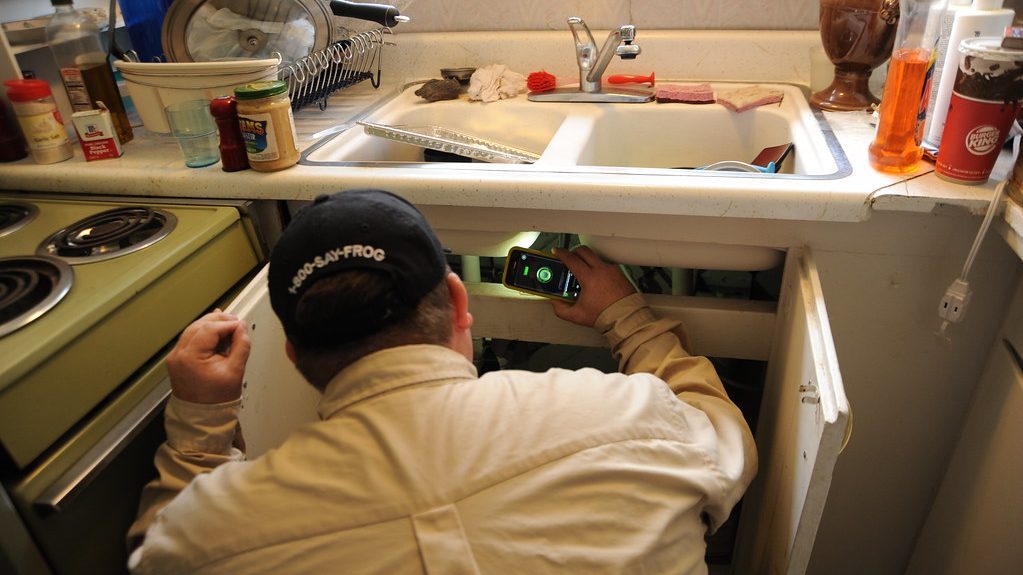 By maintaining a clean home and eliminating attractants, you can crucially reduce the possibility of cockroach infestations while allowing these insects to serve their purpose in the natural world.
By maintaining a clean home and eliminating attractants, you can crucially reduce the possibility of cockroach infestations while allowing these insects to serve their purpose in the natural world.
If you feel things have gone out of control, it is advised to contact pest control professionals. Our team can provide a customized approach to protect your home effectively.
Visit our Species, Control, and DIY Guide sections for additional resources on cokroaches and ways to tackle a cockroaches infestation.





